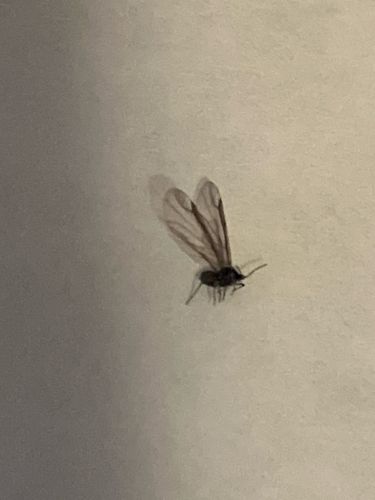Fungus Gnat
Scientific Name: Bradysia spp.
Order & Family: Diptera, Sciaridae
Size: 2-3 mm

Natural Habitat
Damp, humid environments, often associated with potting soil of houseplants, greenhouses, and decaying organic matter.
Diet & Feeding
Adult fungus gnats typically do not feed or feed on liquids, while their larvae feed on fungi, decaying plant matter, and sometimes the roots of plants.
Behavior Patterns
Adults are weak flyers and often seen near potted plants. Females lay eggs in moist soil, and the larvae develop in the soil. Their lifecycle from egg to adult is usually 3-4 weeks.
Risks & Benefits
Generally harmless to humans. Larvae can damage the roots of houseplants, especially seedlings and young plants, leading to wilting and poor growth. Adults are primarily a nuisance. They play a role in decomposition in natural ecosystems.
Identified on: 11/9/2025